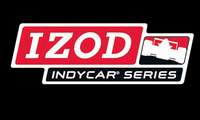IndyCar - 2012 Engine Homologation Information
 |
Indianapolis, Feb. 25, 2012: Trevor Knowles and Darren Crouser hold the keys of the three manufacturers supplying the 2.2-liter, turbocharged V-6 engines for 2012 IZOD IndyCar Series competition. Well, actually they'll be applying seals to crates at Honda Performance Development, Ilmor Engineering and Engine Developments Ltd. to fulfill the INDYCAR homologation requirement.
Homologation? The etymology is Greek; "homologate" is derived from homologeo (to agree). Basically, it's granting approval or confirming the meeting of standards, and - as it refers to the series - the sealing of mandated components.
The parts and complementary technical drawings (listed below) will be used as references - a check system as engine manufacturer competition returns to the IZOD IndyCar Series for the first time since 2005 - during spot checking of engine teardowns (1,800 miles for 2012).
The homologation deadline is a month before the IZOD IndyCar Series' season-opening Honda Grand Prix of St. Petersburg on March 25. Practice commences two days earlier.
"Trevor and Darren will take pictures, measurements and weights and seal a series of parts into a homologation crate and leave that with the manufacturers so we can go back at any point in the future and compare any part with those pieces that have been homologated," INDYCAR vice president of technology Will Phillips explained.
Knowles, INDYCAR's director of engine development, will step through the homologation process at Ilmor Engineering (Chevrolet's partner) and Engine Developments Ltd. (Lotus' partner) at their manufacturing facilities in England. Crouser, an INDYCAR engine support engineer, will visit HPD in Santa Clarita, Calif.
Knowles noted that while Ilmor's inspection will take place at its Northamptonshire headquarters, it will ship the crate to its facility in Plymouth, Mich., where teardowns will be administered.
Manufacturers have mandated specifications, but there are open areas that they'll continue to pursue. According to the engine regulations, manufacturers also can request changes to engine components and McLaren software alterations if a certain part is breaking, there is an operation that they could eliminate to make it less expensive or they have to change suppliers that would lead to changes in how it's made. Information would be shared with INDYCAR and the other manufacturers.
On June 18 and again at the end of the year, manufacturers whose engines are statistically more than 2.5 percent deficient in power may, at the discretion of INDYCAR, make improvements to be homologated. Alterations are allowed to make up 2 percent of shortcomings, and they will be introduced on only new engines being sent to the track.
"The engine manufacturers homologate at a certain date and have to have all their engines in that certain spec for the first race," Phillips added. "Their lead time is way bigger so they've had to commit to certain bits and pieces awhile back."
The engine rules will be stable through the 2016 IZOD IndyCar Series season, with any corrections or modifications decided by INDYCAR after consultation with the engine committee.
Components to be held in secure storage:
• Left and right cylinder heads complete with one cylinder's valves, cam followers, cam bearings and camshafts. These are to be fitted using light springs, not the production valve springs, to allow valve lift vs. camshaft angle to be measured.
• Cylinder block including sump
• Plenum upper and lower
• Compressor inlet and outlet air ducts
• An example of each different design of fuel injector - indirect and direct
Hard copies of drawings to be held in secure storage:
• Piston sleeve
• Connecting rod
• Crankshaft
• Inlet and exhaust manifold faces on cylinder heads.
• Inlet and Exhaust camshaft blank
• Rockers
• Inlet and Exhaust valve lift profiles
• Inlet manifold
• Throttle body and butterfly
• Fuel rails - Indirect and direct
• Engine loom(s)
• Interface loom